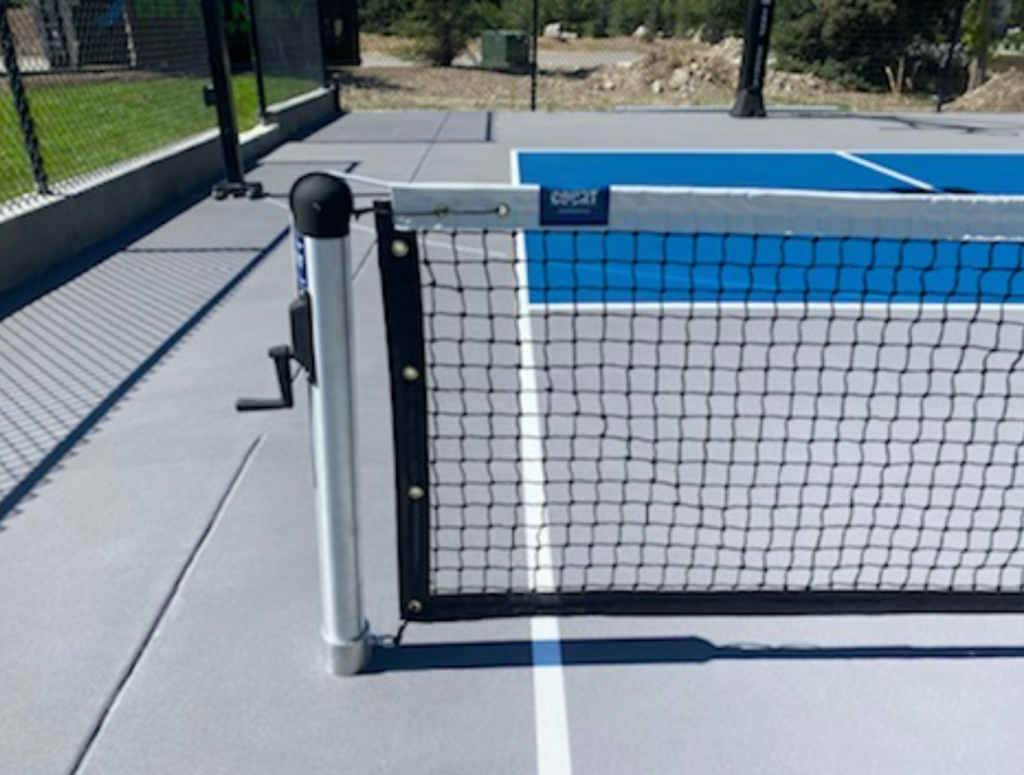Last Updated on November 20, 2025 by Drew Pierce
Let’s get real for a moment; falls are inevitable, especially in a sport as dynamic as pickleball. I used to brush off the idea of “fall prevention” as an illusion. I believed that instead of trying to prevent falls, we should be focusing on minimizing injury during those falls. But my experiences on the pickleball court taught me that it’s a blend of both; learning to fall gracefully and taking preventive measures to avoid these tumbles in the first place. With pickleball injuries on the rise, you want to do everything you can to stay on the court!
Pickleball Footwork Is Everything
On the pickleball court, footwork isn’t just about speed or agility; it’s about safety. During my early days, I stumbled and tripped multiple times. The root cause? Improper footwork. So, I began practicing various footwork patterns both on and off the court.
One of my favorite pieces of equipment is the agility ladder. It’s been an absolute game-changer for me. Not only has it helped me move more fluidly on the court, but it’s also significantly reduced the risk of missteps and falls.

Achieving the Perfect Balance
I used to think balance was all about the legs. I was wrong. Balance is an intricate dance between our visual, vestibular, and proprioceptive systems.
While we might not have much control over our eyesight, wearing glasses or contact lenses during play has made a significant difference for me.
Adequate lighting in the playing area is another crucial factor. I learned about the vestibular system the hard way when my partner experienced vertigo once. If you’ve ever felt the world spinning uncontrollably, you’ll understand how essential a healthy vestibular system is for maintaining balance.
Lastly, training our proprioceptive system – our innate sense of position and movement – has been crucial. This kind of training has helped me anticipate and react to sudden changes in direction, minimizing the risk of a tumble.

Learning the Art of Going Down
I’ve had my fair share of falls, and I realized that sometimes, it’s safer to let yourself go down rather than fight it. But there’s an art to it. Starting from a standing position, transitioning to kneeling, side-sitting, and finally, laying flat on my back has helped me understand the mechanics. I always practice this near something sturdy, like a couch, so I have something to lean on if needed.
Getting Back Up
Falling might be inevitable, but getting up is a choice. Over time, I’ve mastered moving from a seated position to a side sit, transitioning into a hands-and-knees position, and then lunging or walking my feet under me to stand up. It might sound complex, but it’s become second nature with practice.
Embrace the Roll
Remember when I mentioned that falls are inevitable? Knowing how to roll during a fall can be the difference between a minor bruise and a severe injury. My background in martial arts taught me the importance of rolling. A well-executed forward roll ensures I don’t land on an outstretched arm, a common injury scenario.
Steer Clear of the Net and Posts
While this might sound obvious, it’s astounding how many players, including me in my early days, have overlooked the net and its posts as potential hazards. Engrossed in the heat of the game, we often lose track of just how close we might be to these obstructions.
Running into the net or its posts can cause not just minor trips but also more severe injuries if one gets entangled or crashes at high speed.

Additional Tips to Avoid Falling on the Pickleball Court
Spatial Awareness: Always be aware of your position relative to the net and its posts. This isn’t just about safety; it’s also about strategy. A player aware of their position can make more accurate shots and defend more effectively.
Practice Controlled Movement: Especially when lunging forward for a low ball, train yourself to stop or change direction quickly. Drills focusing on sudden stops can be invaluable.
Know the Court Layout: This sounds basic, but you’d be surprised how many players are unfamiliar with the dimensions and layout of the pickleball court. Knowing the exact distance from the baseline to the net can be a lifesaver in tight situations.
Communicate with Your Partner: If you’re playing pickleball doubles, always communicate with your partner about who is taking the shot. Many collisions can be avoided with a simple shout or gesture.
Incorporating these strategies has helped me play a safer and smarter game. While the thrill of chasing the ball is unbeatable, it’s essential to remember that our safety always comes first. After all, we play for the love of the game, and avoiding unnecessary injuries ensures many more matches in the future!
Playing pickleball has been a journey of improving my game and understanding my body’s mechanics. By focusing on pickleball footwork, balance, and learning the correct way to fall and rise, I’ve been able to enjoy the game more safely and confidently. So, the next time you’re on the pickleball court, remember that preventing falls isn’t just about not tripping. It’s about mastering the movements and understanding your body. Safe playing!
